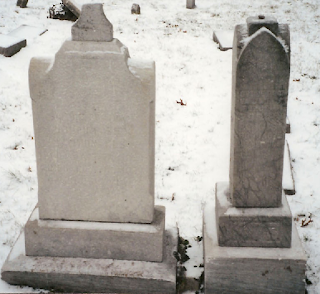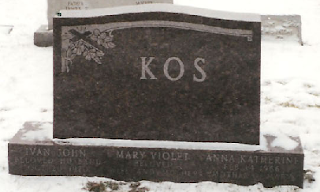Originally published on genealogyatheart.blogspot.com on 28 Aug 2016
Please check out my earlier blogs about my recent adventures researching in Pennsylvania. At this point in my travels, I had one afternoon and one morning left in the area and hadn’t really found much. To recap:
- No will at the courthouse – only the index of the will; the county archivist will be notified to be on the look out but I did search the entire box and it wasn’t misfiled there.
- No voter’s records maintained after 10 years (and I was searching mid- 1800’s)
- No city directory’s for the years the family resided there
- No road work orders
- No education records – they were burned during the Civil War
- Found several deeds and one mortgage – not all were for my family but the ones that were I found helpful.
- Found one tombstone but still needed to know where several other family members were buried.
- If time permitted, wanted to find church records for an unknown church once located between Waynesboro and Gettysburg. Nothing like being precise!
- Still needed to finish going through local newspapers for any reference to the family – like an obit which would have really made my day
I drove back from Chambersburg to Waynesboro and parked in front of the Historical Museum. It’s located on Main Street in an old house. I almost had a heart attack though; it was 12:50 and the sign said it closed at 1. Omg! 10 minutes!? That’s not what the closing time said online. Maybe it was summer hours and the website hadn’t been updated. I quickly went inside.
No one was on the first floor. I called out “Hello,” and heard a response from somewhere upstairs so I walked up. A kind older gentleman was in the library. It was about the same size as the Franklin County Historical Society – two rooms floor to ceiling books. I told the gentleman how glad I was that I had made it before he closed. He said he had plenty of time so not to worry about the sign. Thank goodness for passionate historians!
I told him what I was looking for – I had listed the information on Evernote on my Kindle during my lunch break. The Society’s collection contained mostly genealogies so we began looking for the surnames of those I was interested in. We found two – they weren’t the direct lines I was interested in but they were cousins. I knew this because I always research extended family members; I can’t tell you how many times I’ve found valuable information that way! I am definitely a FAN Club member.
At the bottom of a Family Group Sheet was a note that an obit for a family member had been found in a newspaper I had never heard of and the date was given. This was the family that I had found in the second cemetery that morning. Oh happy days! Maybe it would lead me to where their father was buried and a firm death date. The gentlemen told me, though, that he doubted any copies of that newspaper, which had been a county newspaper, still existed. Of course there wasn’t a clipping of the obit in the Society’s file. I could still check with the two libraries to see if they had digitized records so at least it was a lead.
At this point my cell rang – it was the Reverend who I had left a note for earlier in the day regarding seeing the cemetery records of his church’s cemetery. He told me that he had gone home, which is where the records are kept, and his wife had not found the individuals I had listed. I asked him if I could look myself. In hindsight, I realize this came across as crass but that wasn’t my intention. I wanted to look at who else may have been buried in proximity to the family I had found; I was not doubting that his wife had missed the names I sought. I could tell from his tone of voice he was not pleased. He said he had other plans for the day. I asked if he was available the following morning, my last available time I would be in the area. There was a long pause. I pressed on that I was a genealogist from Florida and that I would be willing to meet him anywhere and any time to see the records. He asked where I was and I told him. He said it would take me about a half hour to get to his home. I wrote down his address and told him I’d be there as soon as possible.
Now I realize in hindsight this was really stupid on my part. I was going to someone’s home I didn’t know, alone, in a rural area I wasn’t familiar with and to people who didn’t want me there in the first place. At the time, though, it seemed like a great idea.
I thanked the volunteer at the historical society and he asked where I was headed off to. I told him I was going to see the cemetery records. He had a hunch that my elusive parents may have been buried in Price’s Cemetery as many Church of the Brethren were buried there. I asked where it was located. Lo and behold – Price’s had changed names and is now called Antietam and surprise, surprise – it was the same cemetery where I had found the son buried in the Pentz family lot. I asked, by chance, did the gentleman know of the name of a Church of the Brethren denomination that once was between Waynesboro and Gettysburg. Sure, he did – it was Price’s Church. Bingo! Did he happen to know where the records were kept for Price’s Church? He suggested I ask the reverend I was going to visit as he was the minister of the church that had taken over when Price’s disbanded. Now I was on to something!
Next time – I’ll talk about my unusual visit with the Reverend.






